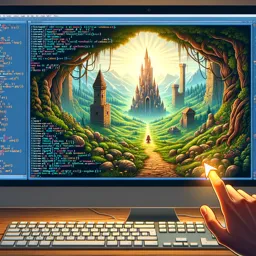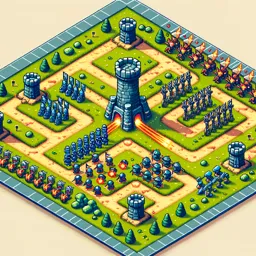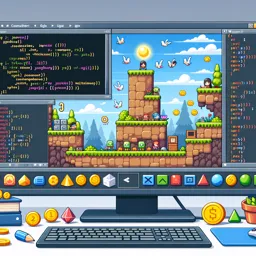Introduction
Unreal Engine is widely recognized for its stunning graphics and robust toolset in game development. However, one of its most powerful yet sometimes overlooked features is its multiplayer architecture. Whether you’re designing a small co-op adventure or a massive online battle royale, Unreal Engine provides the tools and frameworks needed to build seamless, interactive multiplayer experiences. In this article, we’ll explore the essential components of Unreal Engine’s multiplayer capabilities and provide practical insights on how to harness them for your projects.
Core Multiplayer Architecture in Unreal Engine
Unreal Engine is built with multiplayer at its core. It operates on a client-server model, ensuring that all gameplay logic is authoritative on the server, preventing cheating and keeping gameplay consistent. The engine supports both dedicated and listen servers, offering flexibility for different types of multiplayer games.
- Replication: Core to multiplayer logic, replication ensures that changes on the server are synced across all clients. Unreal’s property and function replication tools make synchronizing player actions and world changes straightforward.
- Network Authority: Server authority ensures a secure and fair experience for all players. Developers can define what logic runs on the server, the client, or both using Unreal’s built-in functions.
- Session Management: Unreal offers built-in support for hosting, finding, and joining game sessions, supporting both LAN and online play.
Essential Building Blocks for Multiplayer Games
To create a successful multiplayer game in Unreal Engine, it’s critical to understand and implement the following components:
- Player Controllers: Handle input from players and relay actions to the server.
- Pawns and Characters: Represent players or in-game entities, whose movement and state changes must be carefully replicated.
- Game Mode and Game State: Maintain the rules and overall flow of the game, with their data replicated to ensure every player gets the same experience.
- UI and HUD Synchronization: Keep player interfaces updated and synchronized with game events.
Tools and Plugins for Enhanced Multiplayer
Unreal Engine’s ecosystem includes numerous plugins and community tools that further streamline multiplayer development:
- Online Subsystem Plugins: Integrate with popular matchmaking and online services like Steam, Xbox Live, and PlayStation Network.
- Third-Party Networking Libraries: Enhance networking features or provide alternative protocols for specific needs.
- Blueprint Support: Rapid prototyping and development of multiplayer logic without needing extensive C++ experience.
Best Practices for Unreal Engine Multiplayer Development
When embarking on multiplayer development in Unreal Engine, keep the following best practices in mind:
- Keep replicated properties to a minimum – only replicate what clients absolutely need to know.
- Carefully manage player input and validation on the server to prevent cheating.
- Test with real network latency and multiple players early and often to ensure a smooth experience.
- Take advantage of Unreal’s profiling and debugging tools to optimize network performance.
Conclusion
Unreal Engine offers a comprehensive set of tools for building engaging multiplayer games, whether you are aiming for small-scale co-op adventures or large-scale competitive experiences. By leveraging its robust networking framework, developers can deliver interactive, fair, and immersive multiplayer games that stand out in the industry.
































